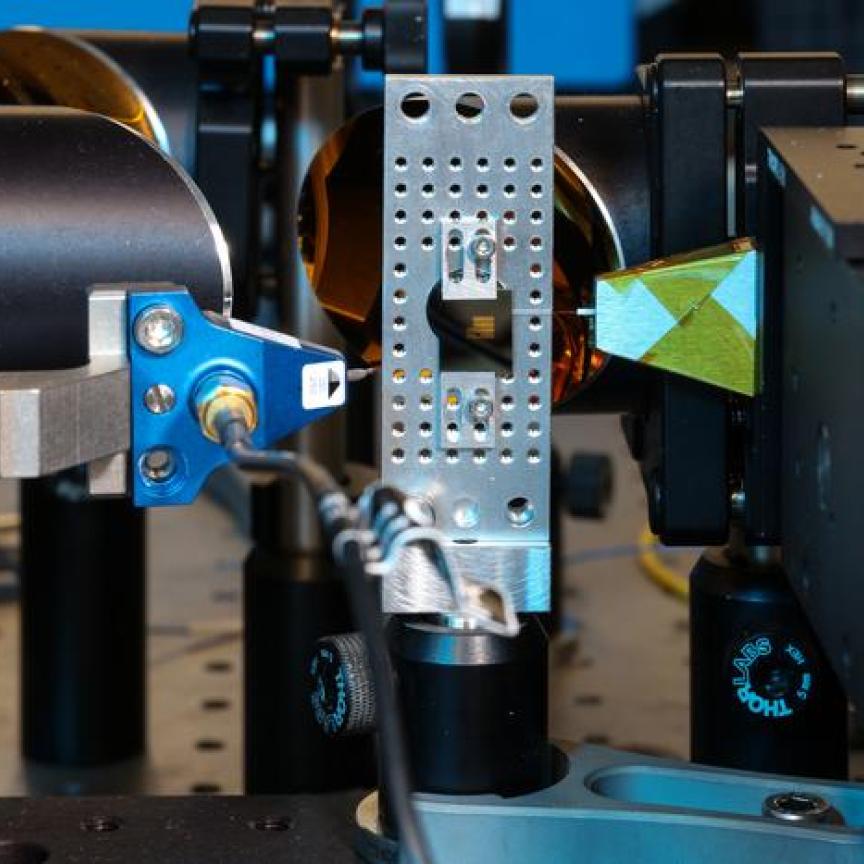In response to ever-crowded urban conditions in countries around the world, researchers in Egypt have developed an inexpensive way of re-directing natural sunlight into dimly lit streets and alleys, where a lack of sun is linked to health problems. A panel is mounted on rooftops and is hung over the edge at an angle, where it distrubutes sunlight onto the street below. The optical device, which can increase brightness in alleyways by up to 400 per cent, was described in a paper published on 14 April in Energy Express, a supplement of The Optical Society’s (OSA) journal Optics Express.
Although there are other commercially available window-like devices that can redirect light, these are designed for shade, redirecting glare, or for brightening a room − not a narrow street. The team of researchers, from Ain Shams University in Cairo, Egypt, wanted to develop a simple way to redistribute natural light without the need for a tracking device to follow the rising and setting sun.
The panel developed at Ain Shams University is made of polymethyl methacrylate (PMMA), the same acrylic plastic of which Plexiglas is made. The bottom of the panel is smooth, while the top is covered in ridges that are based on a sine wave, the mathematical function that describes everything from light to pendulums. Computer simulations were used to find the size and shape of the grooves that distribute the most amount of sunlight in a wide range of sun positions all year round, whether it's high or low in the sky. A sine-wave pattern is also easy to manufacture.

The new light-directing panel, with close-ups. Credit: Optics Express
Using simulations of sunlight shining on an alleyway, the researchers found that the panels increased illumination by 200 per cent and 400 per cent in autumn and winter, respectively, when sunlight is most limited. They also tested a small prototype over a 0.4 x 0.4m shaft that is 1.2m deep and found that it lit up the area as designed.

A simulation of the illuminance of an alleyway. The panel increases the amount of light that reaches the alleyway, as shown by higher amounts of red and yellow in the right-hand images compared to the left-hand images. Credit: Optics Express.
‘We expect the device to provide illumination to perform everyday tasks, and improve the quality of light and health conditions in dark areas,’ said Amr Safwat, professor of electronics and communications engineering at Ain Shams University. These dimly lit areas specifically include narrow streets in developing countries, but Safwat said the new panel could be used in any country as a greener, cheaper, and more pleasant alternative to fluorescent and other artificial sources of light.
According to Safwat, the next stage will be to build a full-scale model 10 times bigger to validate the calculations and to test it in a real street or alleyway. The team then plans to market and commercialise the panel. It is estimated that a one-square-meter panel and a frame will cost between $70 and $100. ‘That may be a small price to pay for the benefits of sunlight. The lack of sun in urban areas doesn't just make life gloomy, it can be harmful to your health,’ Safwat said. ‘Research has shown that lack of natural lighting can cause severe physiological problems,’ such as serious mood changes, excessive sleeping, loss of energy and depression, Safwat stated.
He also noted that using sunlight to illuminate historical places, such as ancient alleyways in Egypt, could also help to preserve the authenticity of the site, maintaining its cultural value and historical significance.


